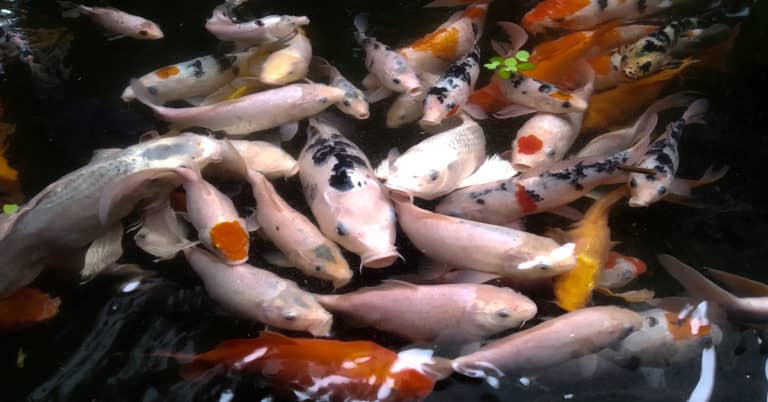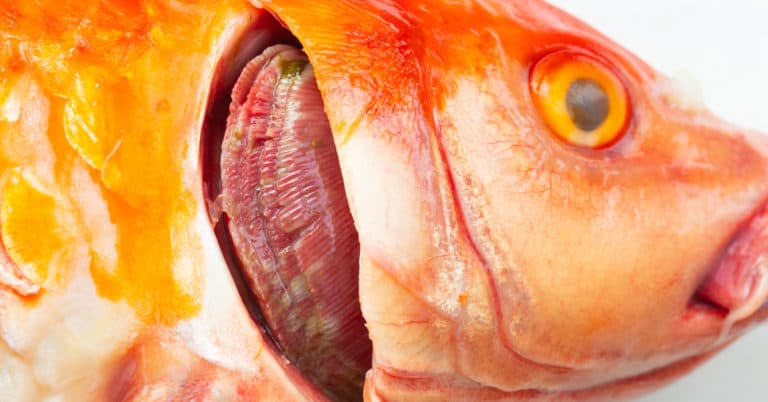When the average person thinks of Japanese Koi fish, they probably think of orange and black Koi fish in a serene pond. Something novices may not know is how social these beautiful fish can be. They are friendly to other fish and often recognize their owner. They’ll even come to the surface to say hello!
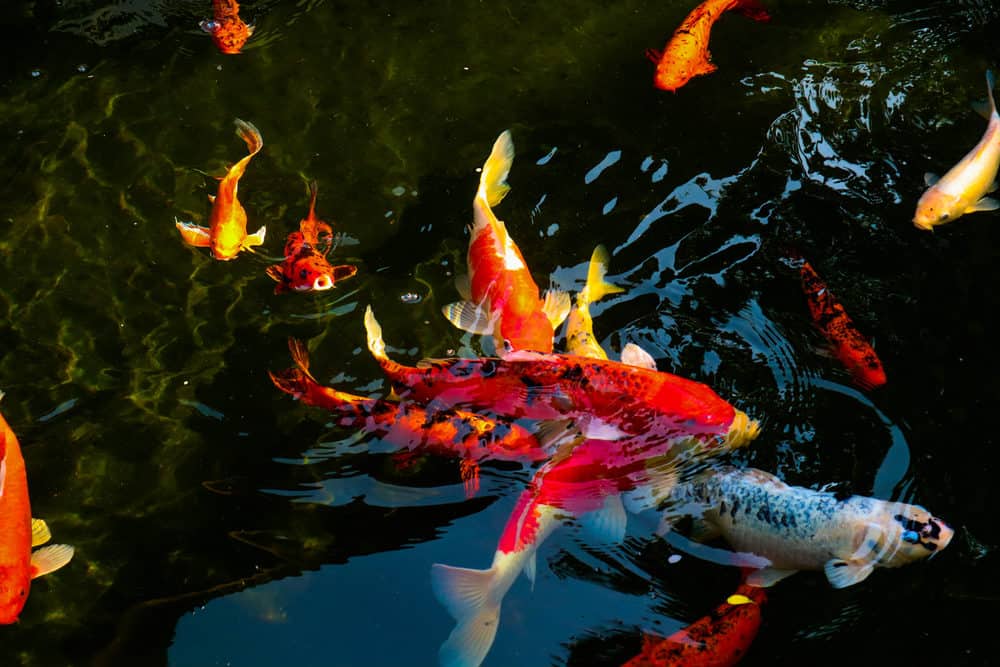
Lovers of Koi have many reasons to adore this fish. Perhaps you have a favorite variety. People often become fans of Koi because of the different bright color combinations that they display.
Our koi providers directory has many types of koi for sale. We have listings for online koi farms and koi providers in your local area. If you're looking for koi with orange and/or black patterns, this is a great place to start.
If you’re interested in learning about all the different types of orange and black Koi fish, keep reading!
As an enthusiast of Koi Pond HQ, I became passionate about Koi fish and developed an interest as a hobbyist. I am not an expert, but I have spent many hours researching the topic. I find joy in sharing my knowledge with others and educating them on all things Koi pond-related.
One thing I find beautiful about Koi fish is the endless number of color combinations and patterns that you can find. Koi experts have identified 22 major Koi fish varieties. These include a handful of varieties that can have orange and black markings in their color patterns.
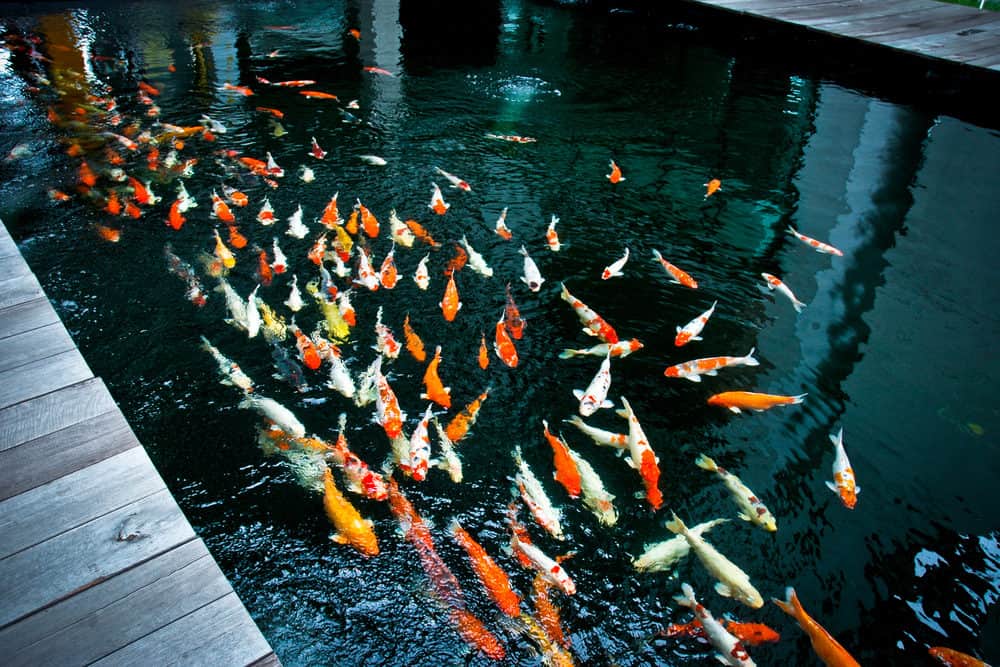
Instead of focusing on a specific type of Koi fish, we’ll go over some interesting information on different kinds of orange and black Koi fish. This info will include:
Traditionally, the value of Koi fish is determined by certain factors, including color. Higher quality is given to colors that opaquer and more intense. Buyers look for lack of impurities in patches of color, as well as defined, contrasting patterns.
Some colors are highly sought after, especially black Koi fish, which are very rare. White, red, and blue pigmentations are also more highly valued than orange and yellow. Orange is considered a degradation of red in most cases, but this is a misunderstanding.
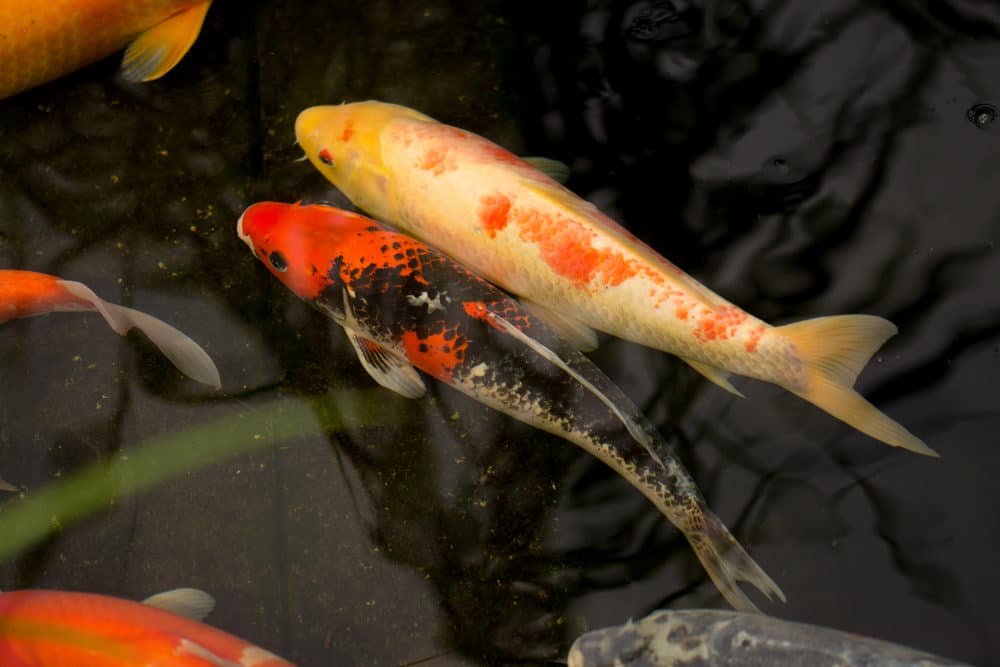
The flesh of Koi is white, with different pigmentation cells that are black, blue, red, and orange. While fading or intensifying red pigmentation to orange can be a sign of poor care and health, genuinely orange Koi are orange because they are born with more pigment cells that make them orange.
It’s simply culture, market, and preference that make Koi fish with orange pigmentation less valuable. If you love orange and black Koi fish, own it! Have no shame in your Koi fish preferences.
Of the 22 significant varieties, there are several that have combinations of orange and black patterns. I’ve outlined them below.
The Hi Utsuri Koi fish displays a bold pattern of deep, dark blacks and bright orange or red patches. Hi Utsuri with red pigmentation often start dull orange and black before deepening to red as they age. Those with true orange pigmentation don’t change the same way.
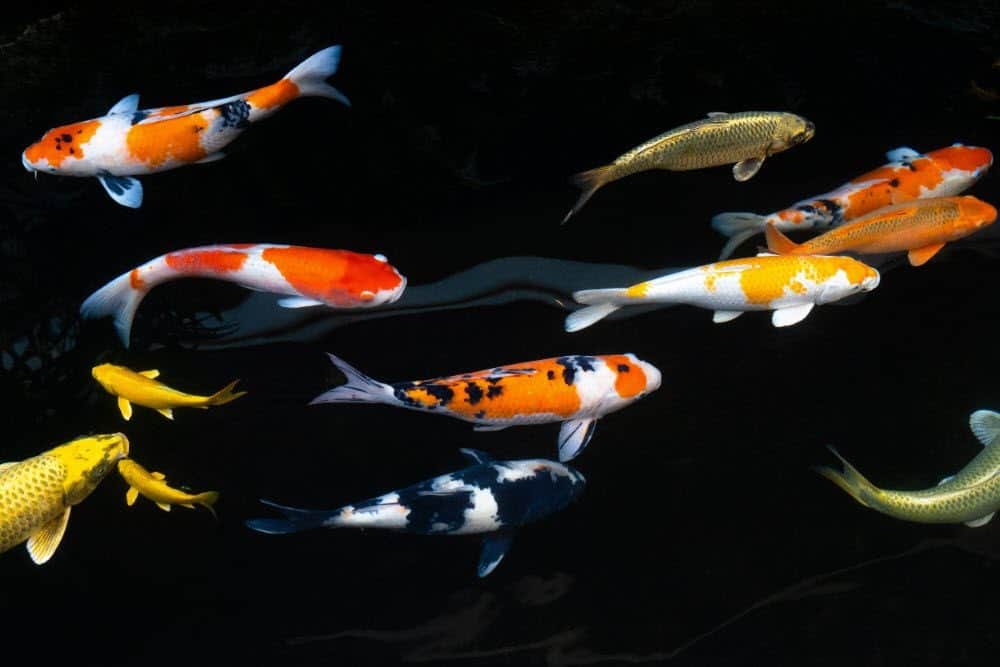
This fish has white and orange on a black base in very defined patches. The Showa Sanshoku is commonly confused with the red and black Taisho Sanke. However, the Showa has a patterned color on the head and wrapping around the body that the Sanke doesn’t have.
Kujaku Koi have a gorgeous silky white base that displays bursts of orange with patterns of black. The black pigmentation on this fish creates a beautiful netting pattern because of the edging on each individual scale on the fish’s back.
The Kin is a new variety of metallic white and black Kikokuryu, but with orange and sometimes yellow pigmentation. The addition of bright color on the metallic base gives a pearlized sheen to this highly prized fish.
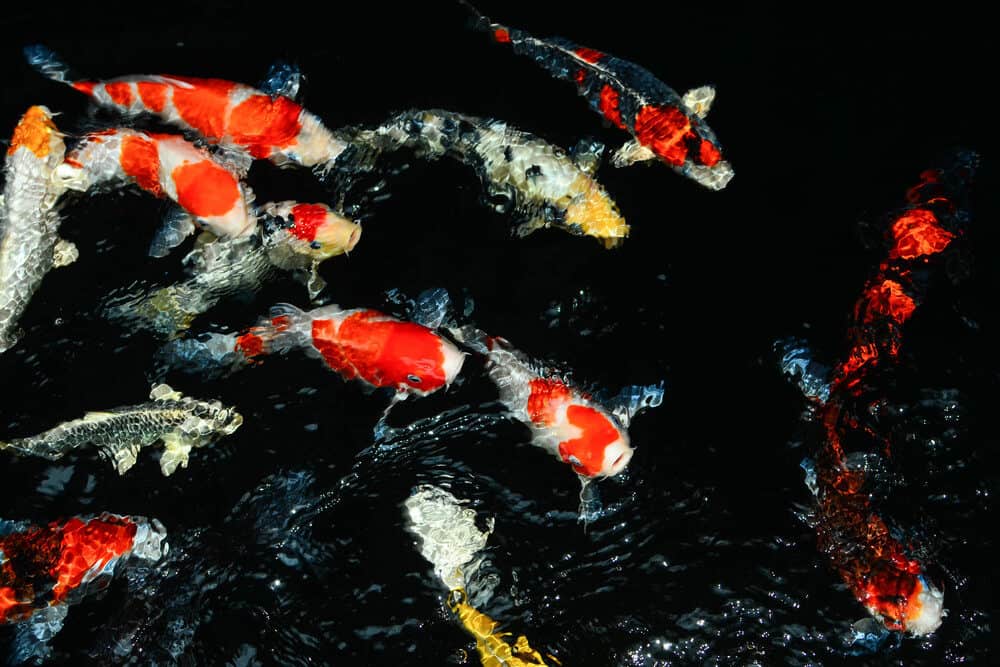
Of the orange and black Koi fish varieties, the Bekko variety is a less common type that isn’t bred as often. They are much rarer, especially the yellow and white varieties that can be pretty striking. Aka Bekko is just as lovely (and highly valued), with their bright orange base and steppingstone patterned black pigmentation along the back length.
Koi parents may see pigmentation becoming duller or lighter over time. This occurrence can happen for several reasons, including water quality, age, stress, food quality, or even changing seasons.
Orange and black Koi fish are born with the pigmentation that decides their color. While solid black Koi often have orange bellies, a change in black pigmentation can be for many reasons. Black Koi can lighten to orange from lack of sun or change in health or diet.
The easiest way to try and increase color depth is to feed your fish high-quality fish foods that contain carotenoids. A carotenoid is a pigment that gives color to carrots, bell peppers, and oranges.
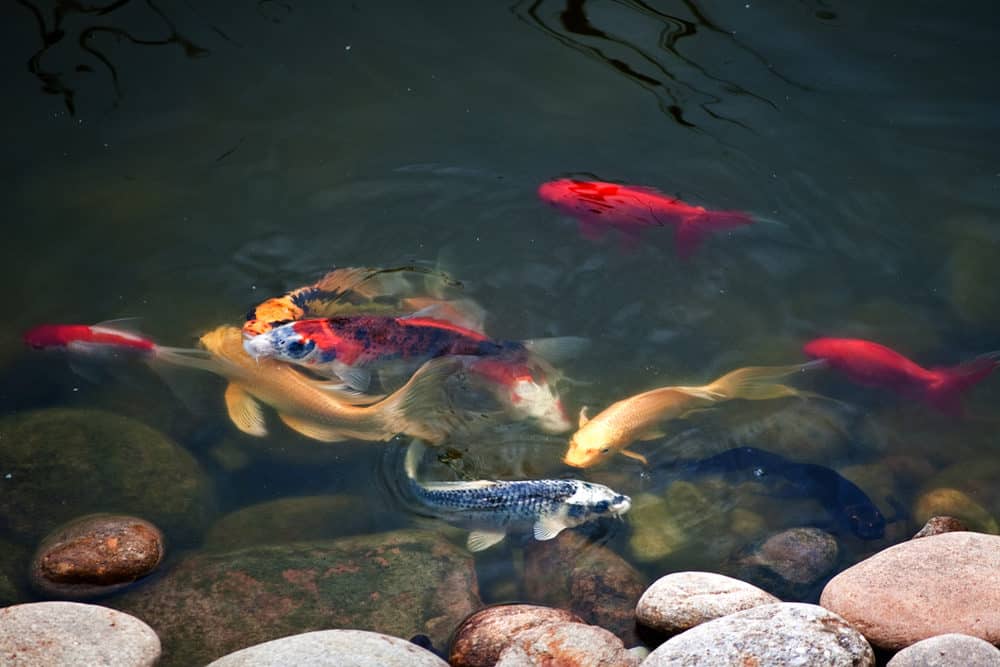
No. Koi and goldfish are both species in the Cyprinidae family. While they are similar, they have many differences. For example, while Koi grow uniformly, goldfish have an extensive range of sizes.
Yes. Koi is notoriously docile and social, especially with goldfish. They live very well together in the same pond. Goldfish are also very accommodating to other fish.
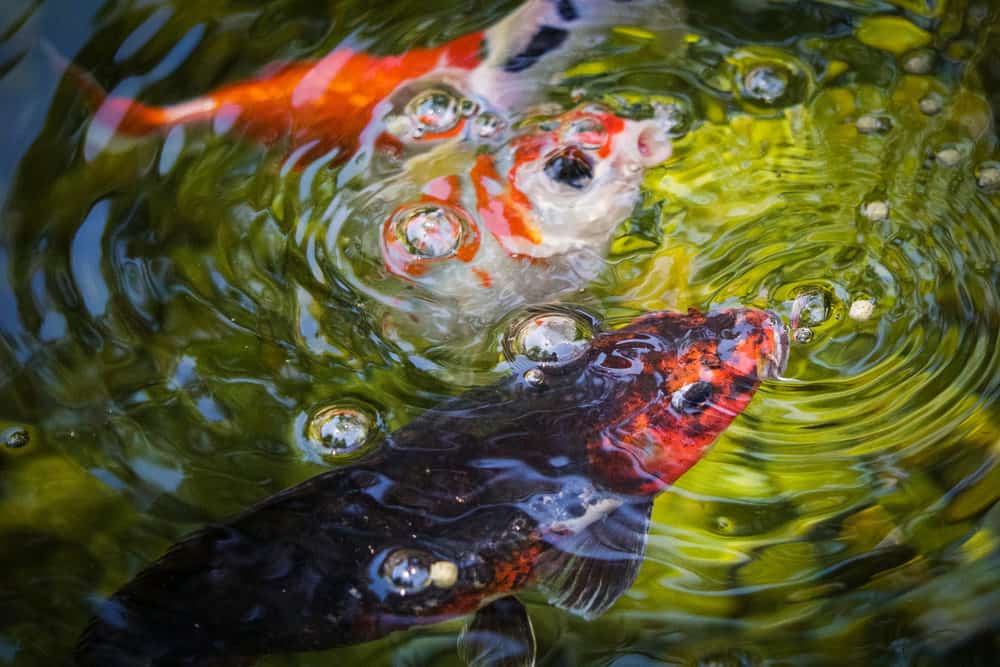
Koi is a type of carp. Carp is eaten worldwide, especially in Asia, where Koi originated and was initially bred. Culturally, Koi carp is not considered a fish that is eaten, just as parrots are not a bird that is consumed.
While there are legends of Koi fish living to be more than 200 years old, this is not quite realistic. They usually live to be 20 to 30 years old.


